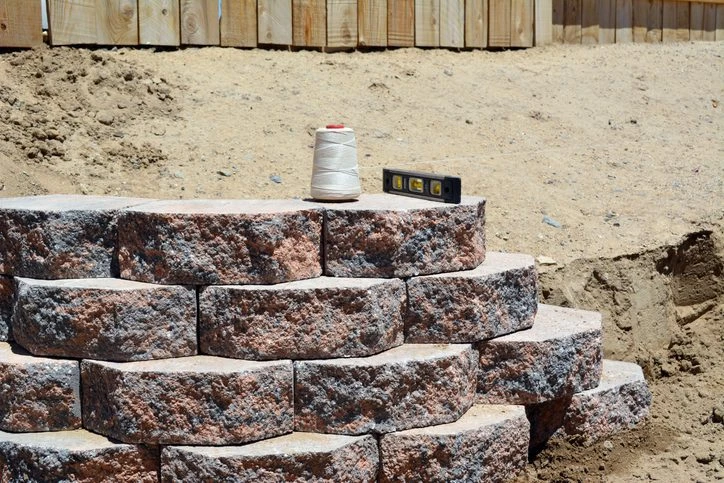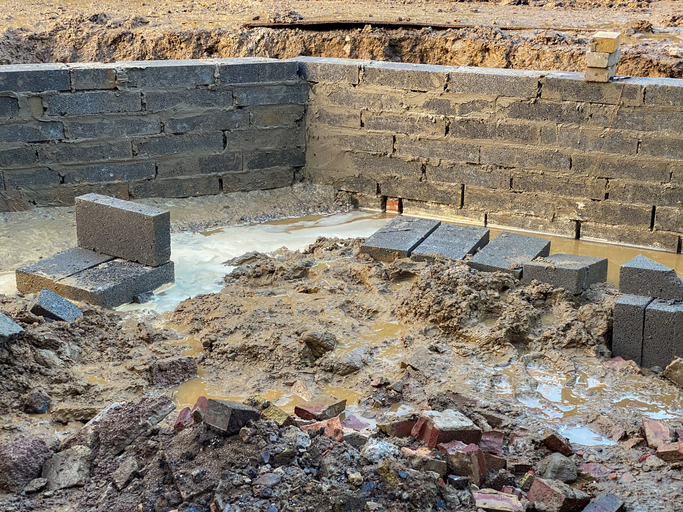Backfill is the dirt and gravel behind your retaining wall that provides your wall with adequate drainage and water redirection. Backfill is a necessary feature of retaining walls because it ensures that there aren’t any drainage issues or water pooling behind your retaining wall.
Poor drainage or inadequate backfill is one of the main reasons why retaining walls fail. This is why it is so important to have adequate backfill behind your retaining wall.
If you want to learn more about how to backfill a retaining wall, continue reading or give New Life Rockeries a call today.

How to Properly Backfill a Retaining Wall
In order to build a reliable, drainage-optimized foundation for your retaining wall, you must ensure that your retaining wall has sufficient backfill.
Below are the five steps for how to properly backfill a retaining wall, if you have any questions about the process, contact our retaining wall contractors team.
Steps For How to Backfill a Retaining Wall
- Lay your base of compacted native soil (about three inches deep).
- Tamp the soil to ensure that it is secure and firm.
- Fill the next six to twelve inches with aggregate or gravel.
- Tamp the gravel or aggregate to ensure a sturdy base.
- Fill the remaining six or so inches with the compacted native soil to allow grass and plant growth around the base of your retaining wall.
What Should You Use to Backfill a Retaining Wall?
The best materials for backfill are native soil for the base and top, with gravel or aggregate forming the body of the backfill between the native soil.
In addition to these materials, creating a backfill will also require the following tools:
- Shovel
- Gloves
- Protective eyewear
- Tamper
How Important is it to Backfill a Retaining Wall?
Adequate backfill is essential for ensuring that your retaining wall drains well as water cannot pass through most retaining walls.
Poor drainage due to insufficient backfill could result in a warped retaining wall with unsightly bulges or cracks as well as a buildup of hydrostatic pressure that could lead to retaining wall failure.
To ensure that your retaining wall stands the test of time, invest the time and energy necessary to install a proper backfill. If you don’t have time to create a backfill on your own, hire a retaining wall backfill company to install one for you.
Need Help Backfilling Your Retaining Wall?
Backfilling a retaining wall properly contributes a lot to the longevity and stability of your retaining wall. Failing to have a retaining wall backfilled properly is one of the main reasons that retaining walls fail.
If you are in need of backfilling or fixing a retaining wall backfill, give New Life Rockeries a call today. Let our team of retaining wall experts take care of your backfilling needs so that you can feel confident in the integrity of your retaining wall.
Our team of landscape professionals has been working with Washington homeowners for more than 35 years. We run a trusted landscaping service that takes pride in bringing beauty as well as practicality to every landscape.

